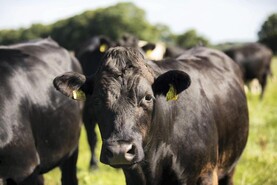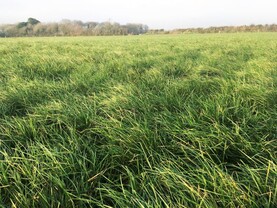Breeding: Most herds are around three weeks into breeding now. The target is to have 90% of the herd submitted for AI in this first three weeks. Cows not served should ideally be scanned by a vet to see what the problem is. Cows calved less than a month will probably only need time but it does no harm to handle these cows anyway. More farmers appear to be using CIDR type synchronisation programmes on heifers before running them with bulls. After three weeks, a significant share (30 to 40%) will be repeating. Have you enough bull power to cover them? Some farmers will remove the bulls and do AI for the week, from day 18 to 24 post-service. Normal ratios of bulls to heifers don’t apply when the heifers were synchronised as repeats that would normally occur over three weeks, happen over seven days, so the bulls will be under more pressure.
Beef bulls: Teagasc held an open day on dairy calf-to-beef in Johnstown Castle last Tuesday. While much of the focus was on rearing and management, getting the calf on the ground with the genetics for carcase yield is crucial if these beef animals are to leave a profit for those rearing them. But dairy farmers have to keep their eyes open. Longer gestation lengths and more difficult calvings are the price to be paid for producing a viable calf. While I believe it’s a price worth paying, there’s a huge difference in calving difficulty, gestation length and beef value between bulls. Study the AI catalogues carefully and pick two or three bulls suited to a range of cow types. Gestation length should be close to zero and calving difficulty should be less than 3.5%. There are enough bulls available within this range that will produce good beef calves.
Weather: Most of the country, with the exception of the southwest, will appear to miss the rain which was forecast for Thursday. By now, some parts of the country have had no significant rainfall events for the full month of May. However, looking at the data from Met Éireann, most of the country had above normal rainfall in March and normal rainfall in April, albeit a drier than normal May. Average grass growth rates have fallen to 60 to 70kg/day on most farms, which is still OK and is enough to meet demand and grow some surplus on most farms. As the best farmers in New Zealand say: “panic slowly”. If this weather continues for three or four more weeks, we will be in a drought. But on the law of averages, rain is never too far away in Ireland. There’s no significant rain forecast for the next 10 days, but air temperatures and sunshine levels are not very high either, so evapotranspiration won’t be too high. Saying that, it’s no harm to have a plan for what to do in the event of a long dry spell where growth decreases. What lessons can we take from last year? In my view, farmers that reduced stocking rate by opening up the farm for grazing and culling unproductive and unnecessary stock got through the drought the best, as they minimised expenditure on meal and were able to put the cows on a long rotation length. It’s no harm to have a plan in place, even if it hopefully won’t be needed.






 This is a subscriber-only article
This is a subscriber-only article










SHARING OPTIONS: